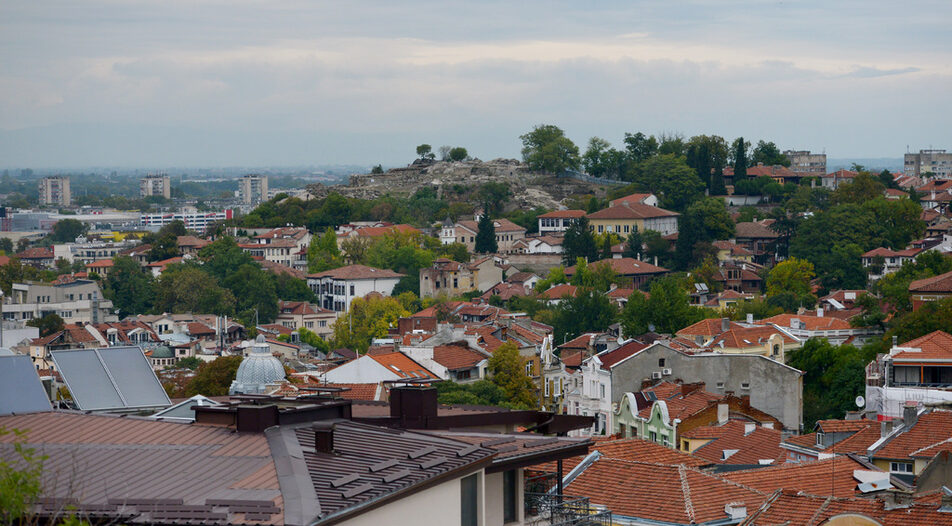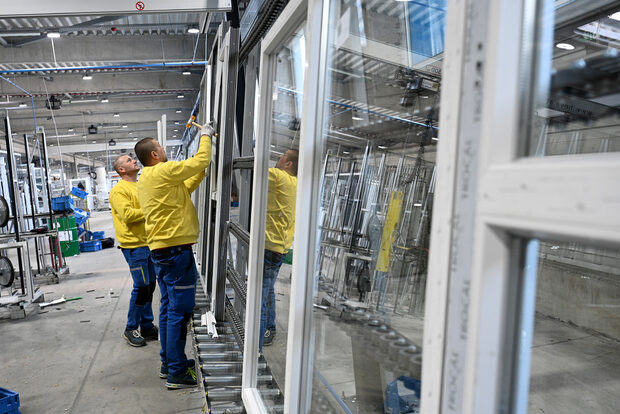In the years before the outbreak of the Covid-19 pandemic in 2020 the economy of Plovdiv province expanded rapidly, giving a boost to the labor market and income growth. The manufacturing industry is the main growth driver, and the contraction of the available labor force is urging industrial enterprises to attract workers from the entire South Central region.
The further development of the province depends on services and especially on the possibility of attracting part of the IT business that is looking for locations outside of the capital Sofia. Plovdiv saw a net inflow of population after the financial crisis of 2007-2008, in contrast with most other provinces that lost population due to outward migration. As a result, in the second half of the period 2010-2020 the coefficient of inward migration-based population growth fluctuated around 3 ‰.
Plovdiv province is a magnet for people from the entire South Central Region. The main sources of internal migration to it are the neighboring Pazardzhik, Smolyan, Stara Zagora, Haskovo, Kardzhali provinces. Thanks to improved transport infrastructure, these areas are also a source of daily labor migration, because of the well-paid jobs in the industrial parts of Plovdiv.
The geographical proximity to Sofia puts the capital in third place as a source of new settlers in Plovdiv province.
Export champions
Part of the success formula of the Plovdiv-based industry is the focus on exports. In 2019, Maritsa municipality which is located in Plovdiv province, entered the top 3 in the province in terms of export revenues per capita (46,000 levs). Rakovski and Sopot ranked among the top 10 with 23,400 levs and 24,500 levs, respectively.
Rakovski and Maritsa are among the municipalities within Trakia Economic Zone, which includes many of the country's leading processing companies. Also, the main reason for Sopot's high export revenues is the location of arms manufacturer VMZ there.
Slowdown in the labor market
Despite the rapid economic growth, Plovdiv's labor market still does not reach the achievements of the leading provinces. While in provinces such as Sofia, Veliko Tarnovo and Stara Zagora the employment rate of the active population (15-64 years) exceeds 75%, the highest employment rate in Plovdiv is 70.3% in 2019.
The educational structure of the workforce plays an important role. While people with secondary and vocational education are most in demand, almost 20% of the active working-age population in Plovdiv province has primary or lower education, which makes its integration into the labor market much more difficult.
However, due to the stable growth of the manufacturing industry in the province, the year-on-year decline in the labor market in 2020 in Plovdiv is small compared to other areas, with the average annual unemployment rate increasing from 2.4% to 3.0% and employment shrinking by 1.5%.
and household income
As a result of its lagging employment rate, Plovdiv performs worse in terms of household income compared to other provinces. In 2019, the average annual income per household member reached 6163 levs which is slightly above the national average, even though it has increased steadily from 4300 levs in 2015.
The high inequality within the province can be seen in the average salaries in its municipalities. While the average gross monthly salary reached 1294 levs in Maritsa municipality in 2019, it was 1128 in Plovdiv. The average salary in the Rhodopes municipality was only 826 levs per month, and in Karlovo - 889.
Problems at school
Plovdiv is among the provinces with the highest percentage of pupils dropping out of secondary and primary school - 3.7% in 2019. Among all other regional centers in the country only Sliven, Silistra and Dobrich performed significantly worse. In the last few years, however, there has been a decline in the percentage of pupils who repeated grades due to poor performance - 0.77% of all in 2019 compared to 2% in 2016.
In the years before the outbreak of the Covid-19 pandemic in 2020 the economy of Plovdiv province expanded rapidly, giving a boost to the labor market and income growth. The manufacturing industry is the main growth driver, and the contraction of the available labor force is urging industrial enterprises to attract workers from the entire South Central region.
The further development of the province depends on services and especially on the possibility of attracting part of the IT business that is looking for locations outside of the capital Sofia. Plovdiv saw a net inflow of population after the financial crisis of 2007-2008, in contrast with most other provinces that lost population due to outward migration. As a result, in the second half of the period 2010-2020 the coefficient of inward migration-based population growth fluctuated around 3 ‰.












